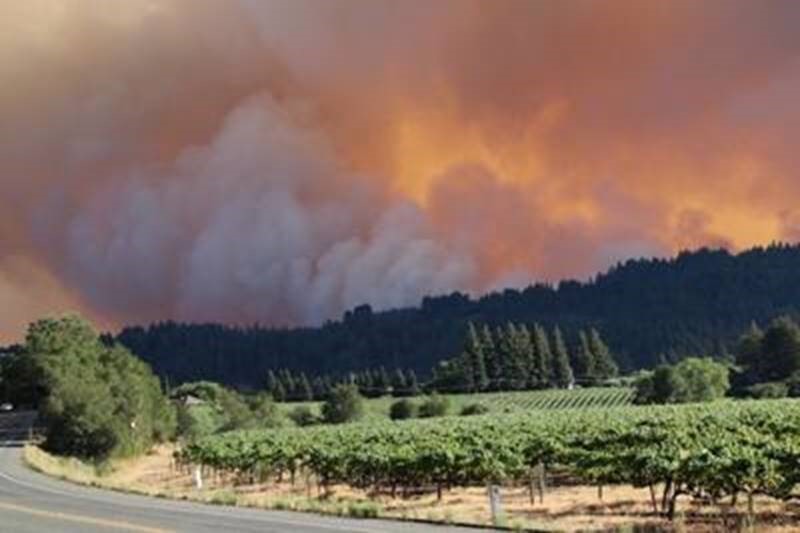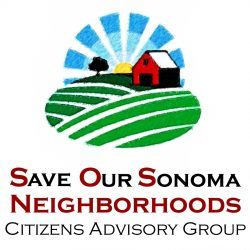Sonoma County defies wildfire public safety standards

Smoke from the Walbridge Fire is seen on Dry Creek Road on Aug. 20. Photo Jan Todd
While many Sonoma County residents feel wildland fire fatigue, we should embrace some hard facts about the underlying factors that have contributed to the situation. California, our county, the nature of the wildland-urban interface, climate change and human factors have led us to a critical and troubling wake up call. Decisions about fire safe roads and development in high fire risk areas are being made at the state and county levels that will determine our future.
Many model counties and leaders in California have been advancing proactive wildfire land use planning, best management practices, and fire preparedness for decades. In contrast, Sonoma County’s fire ordinance does not meet the basic statewide fire safe regulations for the wildland-urban interface (called State Responsibility Area regulations). At the direction of the legislature, the Department of Forestry and Fire Protection (CalFire since 2002) created these standards which went into effect in 1991, just preceding the devastating Berkeley-Oakland fire.
Since 1991, California’s 58 counties have been required to implement the fire safe standards or present an ordinance to the Board of Forestry for certification that must “meet or exceed” them. Our state’s clear intent and requirement states that Sonoma’s ordinance “shall provide for safe access for emergency wildfire equipment and civilian evacuation concurrently and shall provide unobstructed traffic circulation during a wildfire emergency.” The standards include 20-foot minimum road widths (two lanes) and limits the length of dead-end roads to one mile. The state’s standards apply only to new development, and they exempt existing roads used exclusively for agriculture, timber harvesting, and mining.
The supervisors elected to create their own fire ordinance in 2019, ignoring recommendations from concerned stakeholders. The Board of Forestry deemed it did not meet state standards, with particular emphasis on the critical requirement of safe and concurrent access of fire apparatus and egress of civilians — the touchstone of fire safe standards.
Despite this directive to comply with state standards, the supervisors approved a revised fire ordinance in August 2020 that deviates even more radically from the noncompliant 2019 ordinance. It exempts all existing roads from state standards, which is precisely where new development in the wildland-urban interface occurs. Instead, it substituted only a single lane requirement instead of two lanes making it impossible for fire apparatus and civilian vehicles to pass one other. Fortunately, the members of the Board of Forestry scrutinized the ordinance at its September board meeting and asked the county how a single lane road can possibly meet or exceed state standards that require two lanes.
One has to ask: what are the intentions of our supervisors if not to provide for public and firefighter safety during wildfires? Rural Sonoma County has a network of subpar roads, as evidenced in recent years by the disastrous evacuation during the 2017 Sonoma Complex fires, the hours-long evacuation of the Russian River during the 2020 Walbridge and Meyers fires, and the recent grueling evacuation of Oakmont, Los Alamos Road and surrounding environs during the Glass Fire. Our road infrastructure capacity cannot support the existing development in the wildland-urban interface. So why encourage more development there? Supervisors tout their reasons for unfettered development there: housing, homelessness and property rights. Yet even supervisors admit that affordable housing needs to be urban-centric. The supervisors claim that their fire ordinance is superior and actually exceeds the State standards for fire safe roads, yet that is unequivocally untrue. One lane exceeds two lanes?
Rather than addressing these complex public safety issues by exempting all existing roads and promoting development in the wildland-urban interface, the county could evaluate fire risks and advance policy and appropriate mitigations. The current CalFire standards are an example of thoughtful and well-vetted mitigations that merit our attention.
Human factors are critical to addressing wildfire. As development encroaches into the wildland-urban interface, the probability of large fires increases because humans are the leading cause of 96% of all wildfires. In short, land use planning is an important determinant of wildfire ignition risk and the scale of wildfire spread. Residents of Sonoma County should be able to trust their leaders to make reasoned decisions. The housing and homeless crises are not an adequate excuse to exacerbate wildfire dangers and dismiss evacuation capacity and public safety.
Sonoma County should meet or exceed the state regulations, lest more people die and more homes are lost to wildfire in the wildland-urban interface. Not only should the supervisors do things right, but they should also do the right thing.
by Marylee Guinon, Craig S. Harrison and Deborah Eppstein
Marylee Guinon lives in West County and is a retired environmental consultant and business owner. Craig S. Harrison is a retired lawyer living in Bennett Valley. Deborah A. Eppstein, PhD, is a scientist and retired biotech entrepreneur. Her home burned in the Glass Fire when firefighters would not enter Cougar Lane because it is one lane and they didn’t want to hinder evacuation.

Recent Comments